
All categories
Featured selections
Trade Assurance
Buyer Central
Help Center
Get the app
Become a supplier

(837 products available)




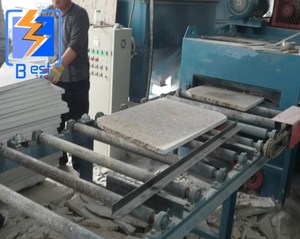

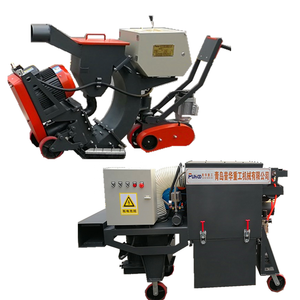

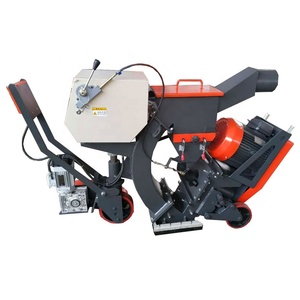

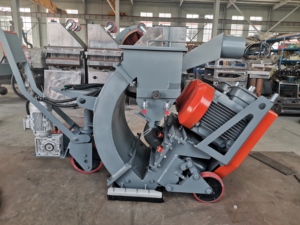



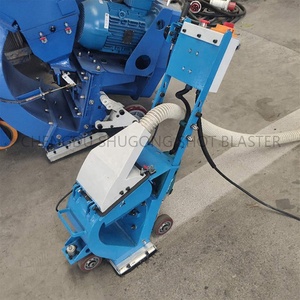

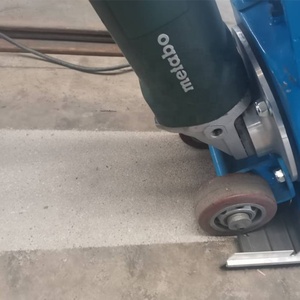




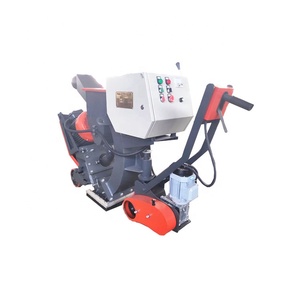


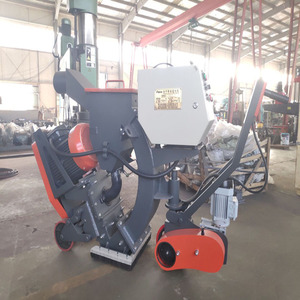


Suppliers often offer these variations of a concrete block shot blasting machine to buyers.
This machine handles blasting on its own. It saves time and reduces blending workers required. The machine moves the blocks and the blasting tools by itself most of the time. This leads to quick cleaning as no one needs to set the machine again for each batch. Automatic machines are good for big factories that need to blast many blocks fast.
The continuous machine keeps working without stops. It can handle a lot of blocks and does not need many pauses. It sorts and cleans many blocks quickly. This is good when blasting requires many blocks at once. It helps to get the work done fast and not spend time stopping and starting the cleaning process.
This type uses a table to hold the concrete blocks while the blasting happens. The table then rotates to show each side that needs cleaning. It is great for blasting many blocks at once because all sides get cleaned up in one go. These machines work best when the top and bottom of each block need the same amount of cleaning.
Buyers should consider these uses when buying shot blasting machine for concrete blocks.
The machine cleans the blocks fast and well. It gets rid of all the dust and junk on top of them. This makes the blocks ready to use right away. Clean blocks make strong walls or floors to put up buildings. The blasting helps them stick together better. This keeps the structure stable for a long time.
The machine changes how the outside of blocks looks and feels. It gives a rough surface that helps stuff stick to it. Paints, plasters, or other materials will grip better now. This makes their job easier and the work last longer. A texture helps finish the block buildings any time of year without the weather changing anything.
The machine blasts away any leftovers stuck to the forms. It cleans them fast so new concrete can go in right away. The forms are ready to use again after one quick cleanup. This saves time and helps get new builds started sooner. Keeping forms clean means new concrete sets right every time they are used.
Rusty or dirty molds are not good for making concrete blocks. The blasting removes all rust and grime so the molds work well. Clean molds lead to high-quality blocks with no flaws inside. They will look and function better. It stops the need to buy new molds too soon. Taking care of molds makes them last longer overall.
When concrete surfaces get shot blast, it becomes very clean and has a rough texture. This helps sealants and coatings stick better to the block surfaces. Buildings will be protected well when sealants stay on tightly. It also stops leaks and damage from water that seeps in. Coatings will last longer and not peel away over time. This keeps maintenance needs low.
Buyers need to pay attention to these specs and features when considering concrete block blast machines.
Blast Wheel Design
The number of blast wheels depends on how many blocks the machine can clean at once. More wheels mean faster cleaning since more steel shots are thrown out. Each wheel spins well to control where the shots hit the blocks. This makes the cleaning even no matter the size of the block.
Blast Room
The blasting room has rubber or steel sides that hold up to years of wear. Shots bounce around inside until they are picked up by the wheels again. The space needs to be big enough for many blocks to fit at once. An exhaust system inside keeps dust and dirt from piling up.
Loading and Unloading Systems
Automatic systems load blocks onto carts with no hands needed. Powered rollers move blocks in and out as needed. This cuts down pauses and speeds up the work.
Preparing the Installation Site
The area must be strong enough to hold the machine's weight. There should be space for both the parts that move and blast. Floors are leveled so wheels do not tip over. Concrete anchors might be added to keep the machine from moving around.
Mounting the Blast Wheels
Every blast wheel gets bolted to a center mount. The wheel should be balanced so it spins evenly. All shots must be controlled well when wheels spin. Cables attached power the wheels so they can rotate fast.
Installing the Blast Room Components
Rubber liners get placed inside the room to protect it. All corners and seams should be lined for best hold. The exhaust fan goes in to clear out dust and keep air clean. Filters catch dirt so air that comes out is fresh.
Loading and Unloading System Setup
The powered rollers or belts need to be set up. Blocks will easily load onto carts this way. The same system must also move finished carts out too. Tracks are all aligned so loading is smooth without jams occurring.
Loading the Concrete Blocks
Users load the blocks onto carts based on the plan. The loader then starts to move the blocks in position. They should be spaced out to allow even blasting.
Adjusting the Shot Blasting Parameters
Users set the amount of shot and pressure based on the type of block. The desired outcomes of the process should guide them. Details should be taken from past successful adjustments as a reference.
Starting the Machine
The controls are checked to ensure all parts are ready. Users switch the machine on to get it started. Initial settings from prior use can assist in quick starting.
Monitoring the Blasting Process
As the blasting occurs, users watch it closely. They should look for any issues like uneven blasting. Any problems that come up should be fixed right away.
Regular Maintenance
Daily and weekly checklists should be followed. Key parts like wheels and drives must be inspected. Any worn parts should be fixed or replaced quickly before they fail completely. Keeping the machine clean stops many problems from happening later on.
Repair Tips
Makers know problems best from their users. The guidebook shows how to fix simple issues like jams or odd sounds. Small repairs can be done without much time taken from work. Warranty coverage is checked so some repairs won't cost anything. Having spare parts ready means less downtime pausing to order more.
When buying, importers should keep these quality and safety factors in mind for shot blasting concrete floor machines.
Makers must ensure that strong steel is used for all key parts like the blast wheels and room. Hardened steel helps it last against heavy shots hitting hard. Welds should be examined closely to see if done well. Bad seams could break during heavy use. Only trusted brands are chosen who have shown to make machines that endure tough factories.
Blast rooms should have thick doors that seal tight. This stops any shots from flying out and hurting someone. Emergency brakes on carts give users time to react if danger is near. Guards around rotating parts must be checked too. Users must ensure they have features that stop access while in use. This lowers chances of accidents occurring.
Makers must test each machine before shipping it out to customers. They can run it with blocks and shots to see how it performs. Measurements are taken to check if it meets standards. Care is used so no defects slip through. Only machines that pass inspection are sent off. This keeps customers from getting faulty machinery.
Dust shields should keep clouds from spreading into work areas. Workers near the machine could breathe dust and need to wear masks if not controlled. A plan must be in place to cut down this risk. Loud noise also disturbs work. Small mufflers on wheels lessen sounds.
Companies write safety and emergency procedures. Workers read them so everyone knows what to do in case of an emergency. Rules govern when maintenance or repairs occur. Machines always stay in good condition this way.
A1:Adding an automatic loading system speeds up the work since operators won’t have to load blocks manually. A bigger blast wheel handles more blocks at once, making the job faster. Installing a sensor to monitor dust levels keeps the air clear and reduces health risks for operators. Using stronger steel for parts like the blast room makes the machine last longer because it can handle tough jobs well.
A2: Regularly cleaning dust and residue from the machine prevents build-up that could wear down parts. Checking and replacing worn components, like the rubber liners or blast wheel bearings, ensures everything works smoothly for a long time. Giving the machine rest during long jobs prevents overheating and reduces wear on all parts. Lubricating moving components, such as gears and pulleys, helps them move easily and reduces the chance of breaking.
A3:If users fail to maintain the machine or use it for more hours than what it is rated for, it can last for about 5-7 years. Also, failure to use it the right way can reduce its lifetime. Usually, these machines last for about 30,000 hours. However, proper maintenance can increase this time to 50,000 hours or more.
A4:These machines do not require frequent maintenance. However, when one part such as the electric motor fails, replacing it can cost between $400 and $700. Moreover, wear parts such as hoppers, blast wheels, and nozzles are quite expensive. To reduce maintenance costs, buyers should consider buying a machine with easily replaceable parts.
A5:Whether concrete block shot blasting machines are new or refurbished, they can last for 5-7 years. Additionally, a well-maintained machine can last longer.